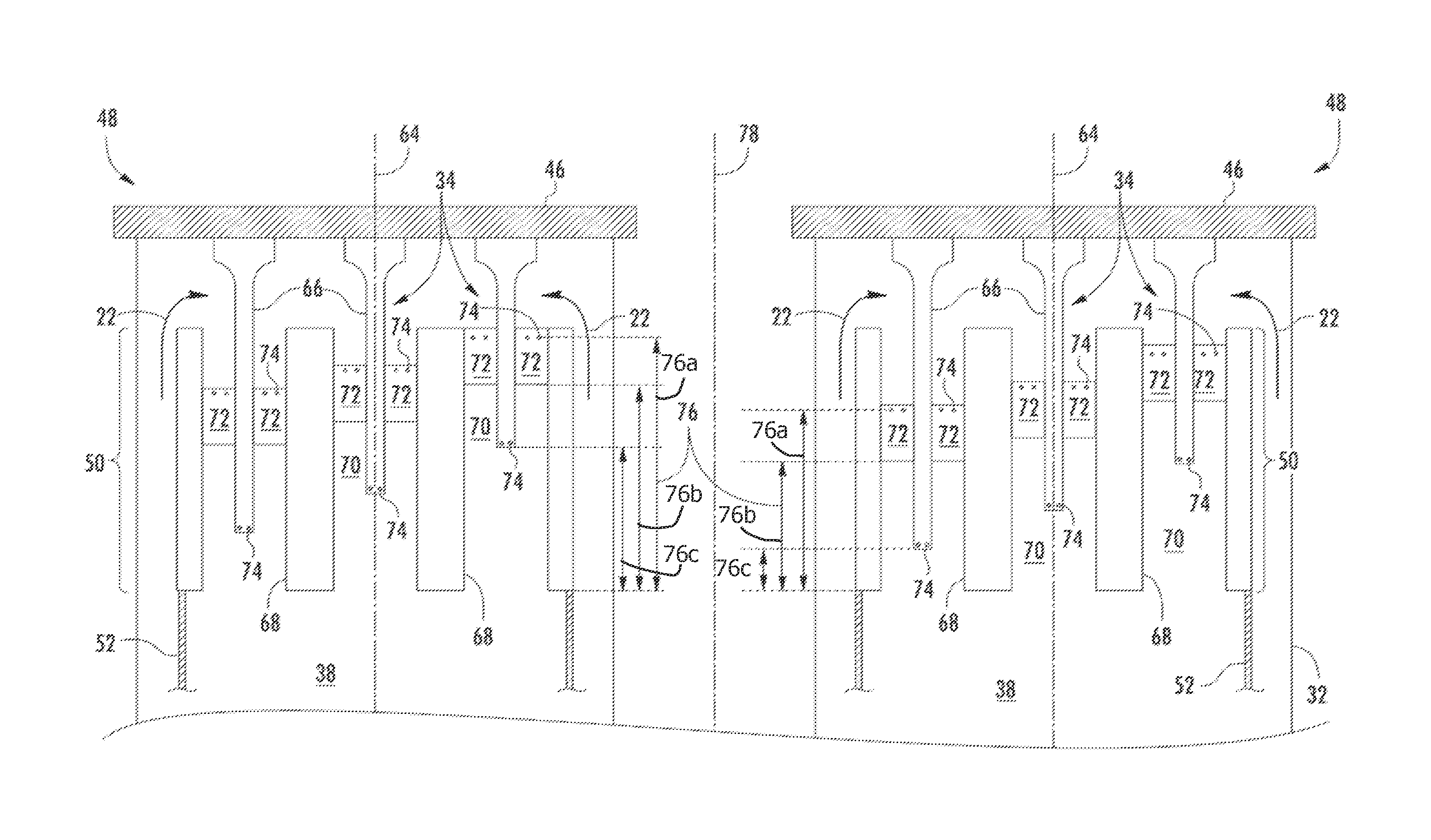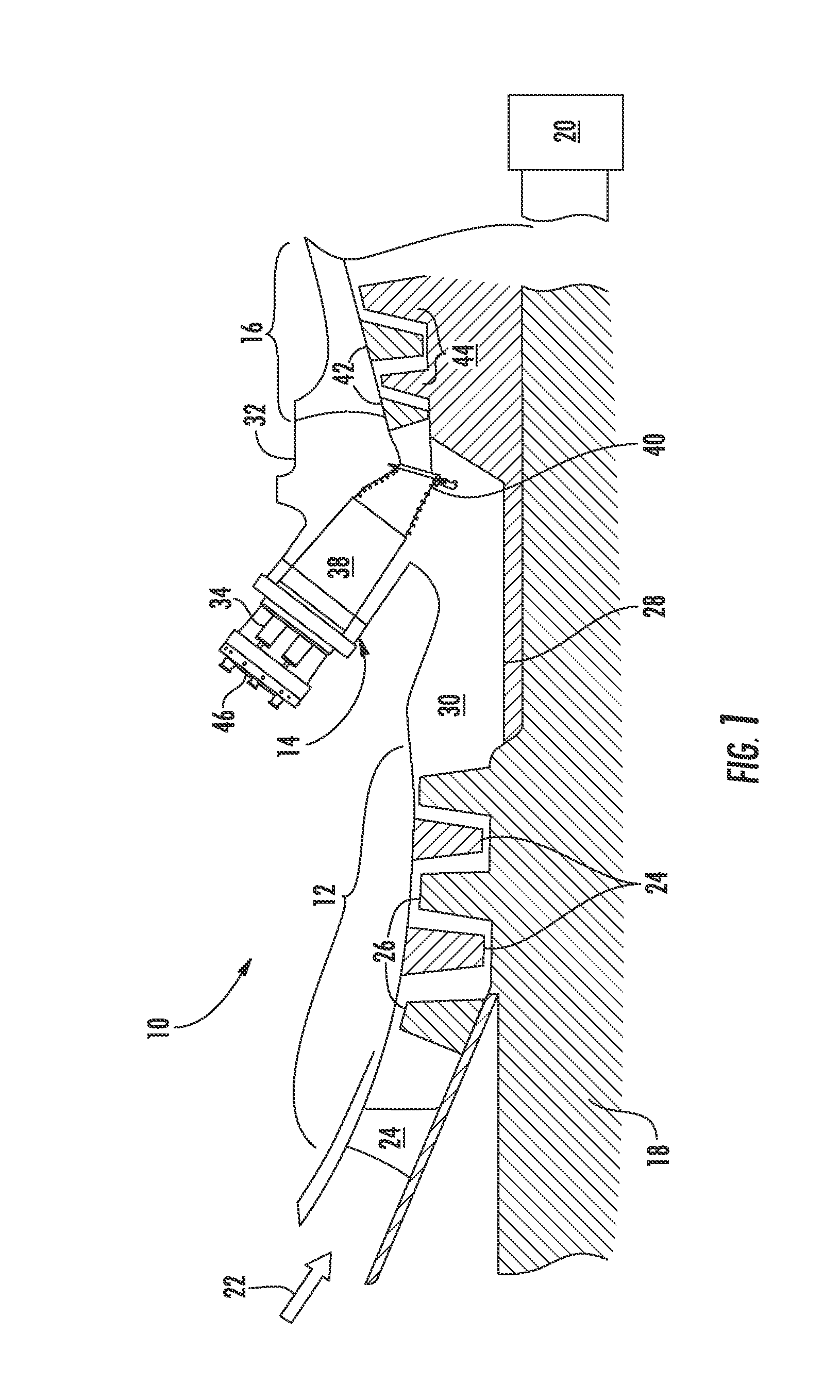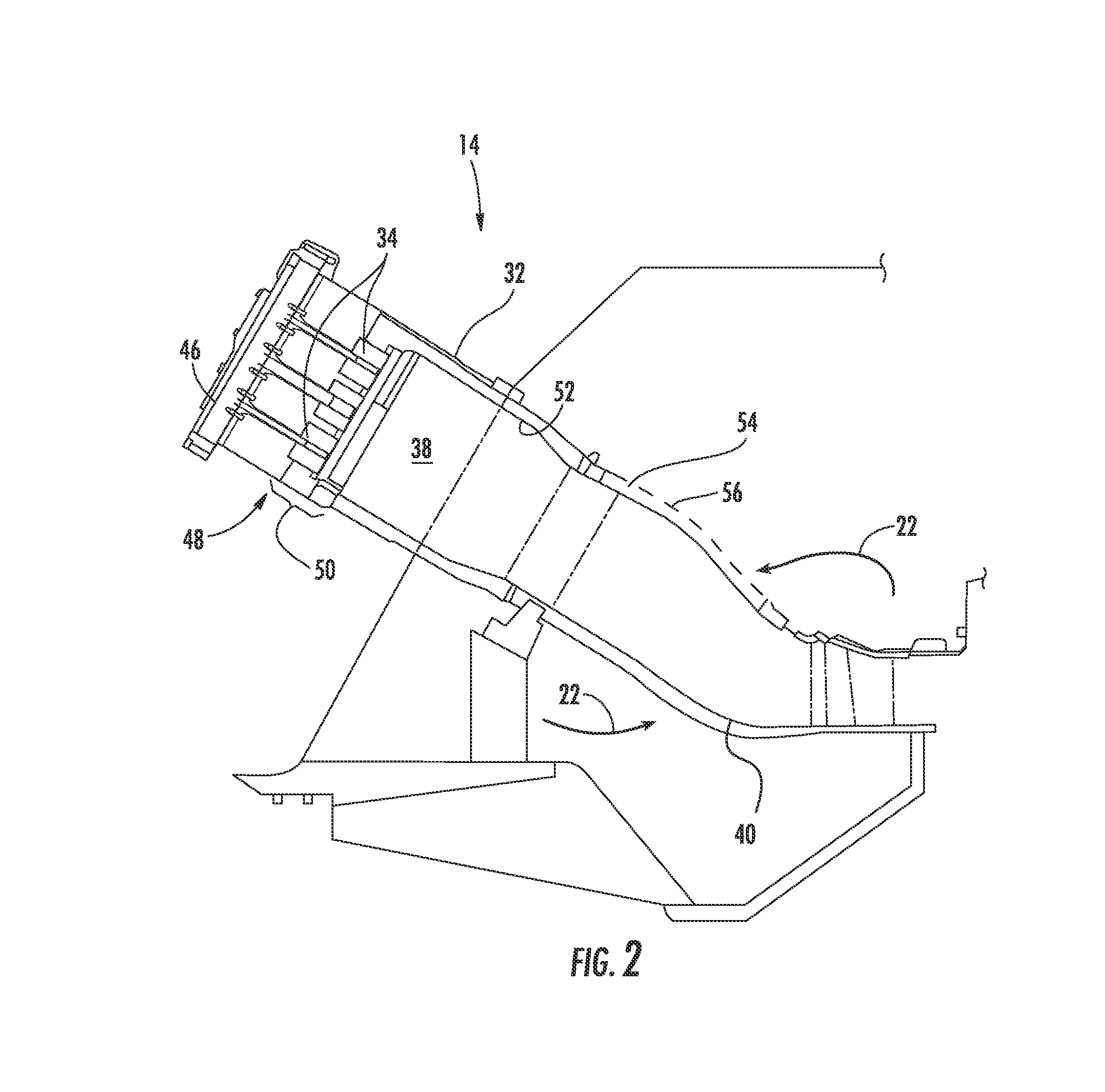System and method for reducing modal coupling of combustion dynamics
a technology of combustion dynamics and modal coupling, which is applied in the direction of combustion types, machines/engines, lighting and heating apparatus, etc., can solve the problems of increasing the production of carbon monoxide and unburned hydrocarbons, accelerating the wear of the fuel nozzle in a relatively short amount of time, and the chemical reaction rate of the combustion gas, etc., to achieve different combustion instability frequencies, reduce coherence, and reduce the effect of coheren
- Summary
- Abstract
- Description
- Claims
- Application Information
AI Technical Summary
Benefits of technology
Problems solved by technology
Method used
Image
Examples
first embodiment
[0046]The combustion dynamics associated with multiple combustors 14 incorporated into the gas turbine 10 may either constructively or destructively interfere with one another to increase or decrease, respectively, the amplitude and / or coherence of the combustion dynamics associated with the gas turbine 10. In particular embodiments, the combustion dynamics associated with one or more combustors 14 may be adjusted and / or tuned to affect the interaction with the combustion dynamics of another combustor 14 and, thus, the combustion dynamics associated with the gas turbine 10. For example, FIG. 7 illustrates a system for reducing coherence and, therefore, modal coupling of combustion dynamics according to the present invention.
[0047]In the particular embodiment shown in FIG. 7, multiple combustors 14 (having fuel nozzles 34, as shown in FIGS. 3 and 6) have been arranged about an axis 78. The axis 78 may coincide, for example, with the rotor 18 in the gas turbine 10 that connects the co...
second embodiment
[0052]FIG. 8 provides a system for reducing combustion dynamics according to the present invention. As shown in FIG. 8, each combustor 14 again includes multiple fuel nozzles 34 with the combustion chamber 38 downstream from the fuel nozzles 34 as previously described. In addition, the axial positions of the fuel ports 74 and / or the vanes 72 may be the same or different in each combustor 14.
[0053]In the specific embodiment shown in FIG. 8, for example, the axial distances 76a, 76c between the fuel ports 74 and the combustion chamber 38 and the axial distances 76b between the vanes 72 and the combustion chamber 38 are different within the same combustor 14, but the axial positions of the fuel ports 74 and the vanes 72 relative to the end cover 46 are repeated in both of the combustors 14. It is contemplated that such a configuration may be applied to all of the combustors 14 in an array of combustors of the gas turbine, or may be applied to some sub-set of “n” combustors 14 in the ar...
third embodiment
[0064]The combustion dynamics associated with multiple combustors 14 incorporated into the gas turbine 10 may either constructively or destructively interfere with one another to increase or decrease, respectively, the amplitude, coherence, and / or modal coupling of the combustion dynamics associated with the gas turbine 10. For example, FIG. 10 provides a system for reducing modal coupling of the combustion dynamics according to the present invention. In the particular embodiment shown in FIG. 10, multiple combustors 14 (as shown in FIGS. 5 and 9) have been arranged about an axis 100. The axis 100 may coincide, for example, with the rotor 18 in the gas turbine 10 that connects the compressor section 12 to the turbine section 16, although the present invention is not limited to the particular orientation of the axis 100 or the particular arrangement of the combustors 14 about the axis 100.
[0065]As shown in FIG. 10, each combustor 14 includes multiple tubes 36 arranged in pie-shaped t...
PUM
 Login to View More
Login to View More Abstract
Description
Claims
Application Information
 Login to View More
Login to View More - R&D
- Intellectual Property
- Life Sciences
- Materials
- Tech Scout
- Unparalleled Data Quality
- Higher Quality Content
- 60% Fewer Hallucinations
Browse by: Latest US Patents, China's latest patents, Technical Efficacy Thesaurus, Application Domain, Technology Topic, Popular Technical Reports.
© 2025 PatSnap. All rights reserved.Legal|Privacy policy|Modern Slavery Act Transparency Statement|Sitemap|About US| Contact US: help@patsnap.com



